ART COLOGNE
600 YEARS AGO
The art of Cologne has a leading place in mediaeval painting as regards to the quality, the quantity, and the amount that has been handed down to us. In the Wallraf-Richartz-Museum alone there are currently some 290 late mediaeval paintings from Cologne. All in all, as much as a third to a half of all the panel paintings once done in the city have come down to us – not to count the numerous (but lost) decorative and occasional pieces commissioned from the mediaeval painters.
We know from the city’s records the names of the mediaeval artists who lived in Schildergasse, the street where Cologne’s painters (“schilder”) lived. But sadly it is almost impossible to connect their names with specific works that we have, because the relevant contracts are missing and the Cologne painters never signed their works. They had yet to view themselves as art stars, seeing themselves rather as honest craftsmen. So we have to give the creators expedient names, which mostly refer to a celebrated work by that painter – such as the Master of St Veronica or the Master of the Legend of St George.
In commercial, political and intellectual terms, Cologne had the best qualifications for a flourishing culture: the Rhine as a major artery for transport, privileged merchants whose interest in boosting their status made them willing sponsors, the university as an intellectual breeding ground, a politically stable community protected by mighty walls, a great number of both large and small churches, countless relics, thriving pilgrimage tourism, and a corresponding need for ornate church furnishings.
The painters in Cologne received constant inspiration through their contact with colleagues in Westphalia, the Lower Rhine, the Netherlands and France. This was further amplified by exchanges with such allied arts as book illumination and stained glass work, gold work, sculpture, and even in part architecture. The influence of this steady stream of new impulses was muted, however, by strict guild rules and a mostly conservative clientele.
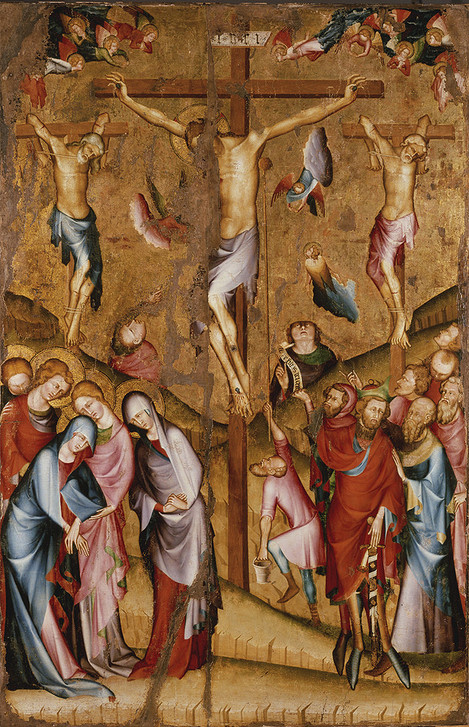 France: The Wehrden Crucifixion, c. 1340, Oak, 169 x 111 cm. Acquired in 1964 with support of WDR, Stiftung Volkswagenwerk, City of Cologne and the State of North Rhine-Westphalia. WRM 0883. Photo: Rheinisches Bildarchiv Köln
France: The Wehrden Crucifixion, c. 1340, Oak, 169 x 111 cm. Acquired in 1964 with support of WDR, Stiftung Volkswagenwerk, City of Cologne and the State of North Rhine-Westphalia. WRM 0883. Photo: Rheinisches Bildarchiv Köln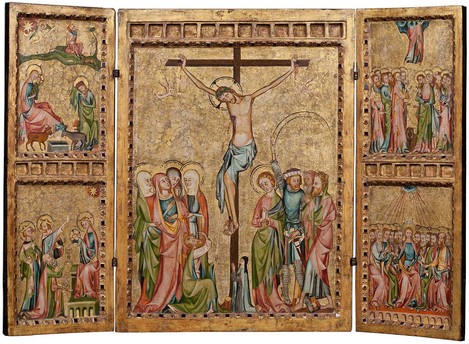 Cologne, c. 1340 – 1350: Triptych with Depiction of the Salvation Story. Oak, central panel 65 x 48 cm, wings each 65 x 24 cm (with original frame). Collection of Ferdinand Franz Wallraf. Inv. no. WRM 0001. Photo: Rheinisches Bildarchiv Köln
Cologne, c. 1340 – 1350: Triptych with Depiction of the Salvation Story. Oak, central panel 65 x 48 cm, wings each 65 x 24 cm (with original frame). Collection of Ferdinand Franz Wallraf. Inv. no. WRM 0001. Photo: Rheinisches Bildarchiv Köln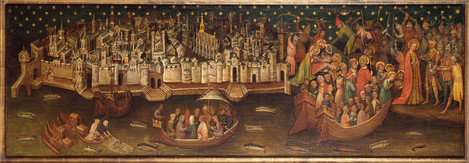 Master of the Little Passion (active in Cologne c. 1400 – 1420): Martyrdom of St Ursula at Cologne, c. 1411. Canvas, 60 x 179 cm. Collection of Ferdinand Franz Wallraf. WRM 0051. Photo: Rheinisches Bildarchiv Köln
Master of the Little Passion (active in Cologne c. 1400 – 1420): Martyrdom of St Ursula at Cologne, c. 1411. Canvas, 60 x 179 cm. Collection of Ferdinand Franz Wallraf. WRM 0051. Photo: Rheinisches Bildarchiv Köln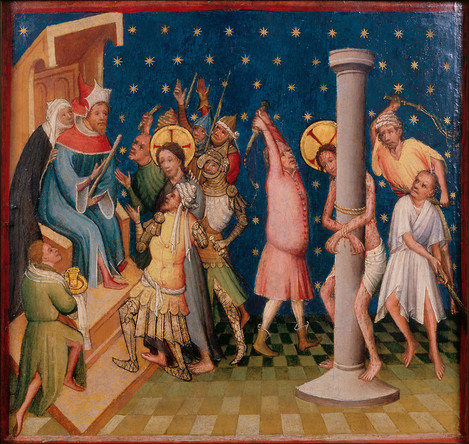 Master of the Little Passion (active in Cologne c. 1400 – 1420): The Little Passion (Parts of a Triptych), c. 1415 - 1420. Oak. Collection of Ferdinand Franz Wallraf. WRM 0038 – 0045. Photo: Rheinisches Bildarchiv Köln
Master of the Little Passion (active in Cologne c. 1400 – 1420): The Little Passion (Parts of a Triptych), c. 1415 - 1420. Oak. Collection of Ferdinand Franz Wallraf. WRM 0038 – 0045. Photo: Rheinisches Bildarchiv Köln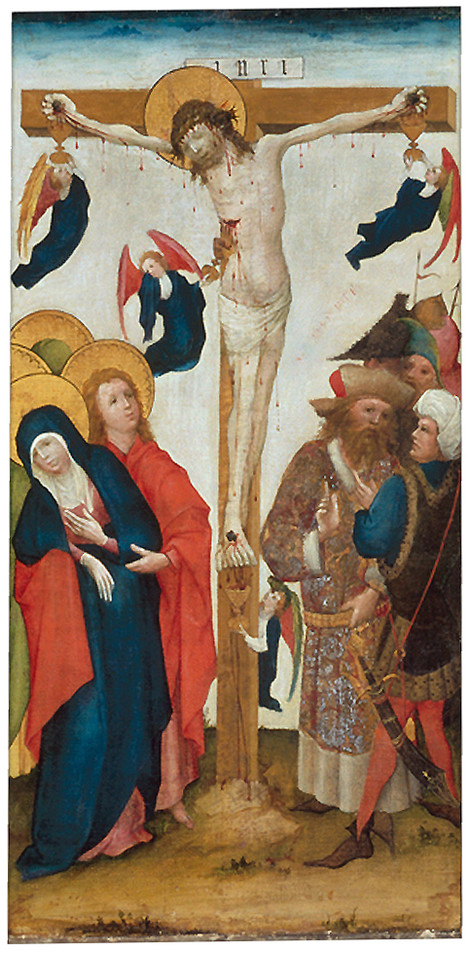 Master of the Stations of the Passion (active in Cologne, c. 1415 – c. 1440): Christ’s Life and Suffering in 31 Pictures, c. 1430–1435. Canvas, 121 x 399 cm (frame size). Collection of Ferdinand Franz Wallraf. WRM 0090. Photo: Rheinisches Bildarchiv Köln
Master of the Stations of the Passion (active in Cologne, c. 1415 – c. 1440): Christ’s Life and Suffering in 31 Pictures, c. 1430–1435. Canvas, 121 x 399 cm (frame size). Collection of Ferdinand Franz Wallraf. WRM 0090. Photo: Rheinisches Bildarchiv Köln


